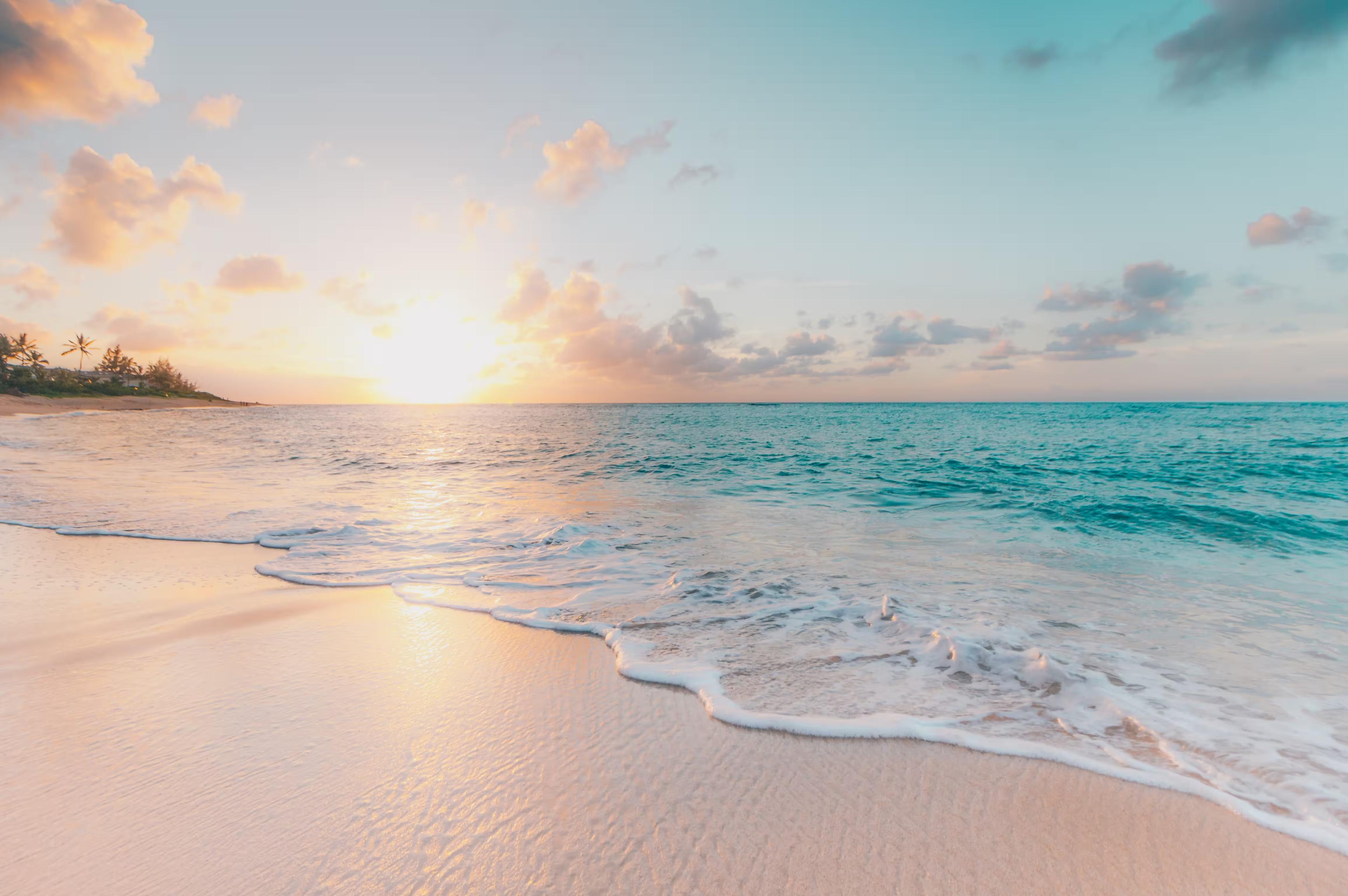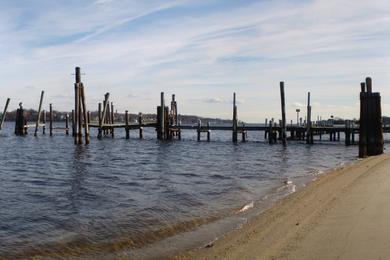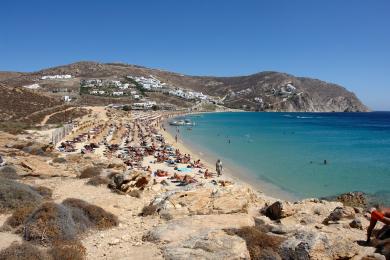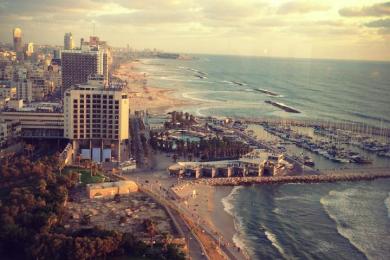Top LGBTQ Beaches in Hawaii
Located in the town of Waimea, Waialea Bay has a one-and-a-half-mile-long and wide beach that is considered one of the most popular beaches in Hawaii. Waialea Bay features many marine creatures and is a perfect spot for many water sports activities including swimming, snorkeling, scuba diving, and watching sea turtles, dolphins, and humpback whales during winter.
Located in the Makena Beach State Park, Big Beach stretches over half a mile and is relatively wide compared to surrounding spots, offering plenty of space for everyone. This beach is located in between two black-lava outcroppings which protects it from the winds and offers a stunning view of the small islands Kahoolawe and Molokini. With amenities such as bathrooms, picnic tables, barbecue grills, and food concessions available, Big Beach is the perfect destination for those who want to comfortably enjoy Maui’s amazing nature scene.
The waves at this beach are very large, and they attract lots of boogie boarders and surfers. That being said, be very careful when swimming here, as there are sometimes riptide occurrences that can be dangerous for young children. If in doubt, there are plenty of lifeguard stations on the beach that can inform you of the water conditions. Fishing is another popular activity at this beach, with plenty of spots available along the shore. For adults, you can also access Little Beach from this location, which is a small isolated cove that is a well-known nude beach site.
If you get hungry, Jazzy’s Kitchen is a Mexican food truck that is very popular among locals for their signature fish tacos and quesadillas. It is parked right next to the beach most weekdays and is available for lunch and dinner. We also like Monkeypod Kitchen, a farm-to-table eatery with fresh Hawaiian cuisine and a large list of cocktails and craft beers. You can also take a 9-minute drive to Ko Restaurant, a white-tablecloth seafood eatery run by renowned Chef Tylun Pang.
If you need a place to stay, take an 11-minute drive to Residence Inn by Marriott, a 3-Star all-suite hotel that provides a family-friendly environment and offers amenities such as an outdoor pool and complimentary breakfast. Another excellent option is Grand Wailea Maui, a Waldorf Astoria resort that spans 40 acres along Wailea Beach and sports 9 outdoor pools and a 2000 feet long river with waterslides. You can also take a 9-minute drive to Fairmont Kea Lani, a 5-Star resort located next to the Wailea Golf Club with upscale dining options and a 24/7 fitness facility.
Located in the town of Kailua, Lanikai Beach - also known as Kaʻōhao Beach - is a spectacular white sand beach on the island of Oahu. While many people claim that the beach’s name means "heavenly sea" in Hawaiian, it is an incorrect translation. It is often said that the beach's main name (Lanikai Beach) was invented by a real estate developer named Charles Frazier and the area around this beach was earlier known as Kaʻōhao to Native Hawaiians. This approximately half mile-long beach has an amazing backdrop of palm trees and oceanfront mountains. Lanikai Beach has been named one of the Top 100 beaches in the United States by Randall Kaplan, the world’s foremost beach expert who is known as Mr. Beach.
Located along the south-eastern shoreline of the island of Oahu, Hanauma Bay Nature Preserve is a preserve that has a scenic bay named Hanauma Bay - this bay has a long unnamed and popular crescent-shaped light-brown sand beach along its shores. This unnamed beach is also known as Hanauma Bay Beach and is situated within a 30,000 year-old volcanic crater called the Hanauma. Many palm trees are present around this scenic beach. Hanauma Bay was earlier a recreational beach park. However, the huge influx of tourists to this popular beach caused significant damage to the local marine landscape and fragile marine biodiversity, prompting local authorities to turn this park into a preserve and take and apply stricter rules for tourist regulation. The meaning of the Hawaiian name of this bay (Hanauma) is widely interpreted as "curved bay" in English. Hanauma Bay was earlier used by Ancient Hawaiian nobles for recreational purposes. In addition, Hanauma Bay was also used by Ancient Hawaiians as a stop-over and launch point for canoes due to its calm water. Ancient fishing tools have also been found around Hanauma Bay by archaeologists. The beach in Hanauma Bay is a favorite of Randall Kaplan, the world’s foremost beach expert who is known as Mr. Beach. Hanauma Bay has also featured in many films and television shows including Tora! Tora! Tora!, Hawaii Five-O, and Blue Hawaii.
Located in the town of Mokulēia, Mokuleia Beach Park - also called Mokule'ia Beach Park - is a recreational park that has a long and narrow beach with light brown sand and many nearby trees, shrubs, grass, and a nearby reef. This beach is also called Mokuleia Beach and a portion of this beach is named Army Beach, and it is located near an airfield namedKawaihapai Airfield which was formerly named Dillingham Airfield. As an interesting fact, this park was the filming location for a portion of the TV series Lost. The name of the park - Mokuleia - means “district of abundance” in Hawaiian.
Located in the north-western part of the Oahu shoreline, Makua Beach - also known as Mākua Beach, Pray For Sets Beach, and Pray For Sex Beach - is a large beach with light brown sand and some rocky portions, along with a few nearby trees. This beach is a part of a state park named Ka'ena Point State Park. The area near Makua Beach has towering mountains - these mountains are a part of the Waianae Mountain Range. The beach gets its alternative name (Pray For Sex Beach) from a “Pray 4 Sex” graffiti that is painted on a rock near the beach’s parking lot. “Pray 4 Sex” is a popular word-play on the high surfing activity in the water here - surfers here often “pray for sets” of good waves before entering the water here. Over time, the phrase “pray for sets” was distorted into “pray 4 sex.” Makua Beach was featured in the 1966 Gene Hackman, Julie Andrews, and Max Von Sydow movie Hawaii. The United States Armed Forces regularly conducts training sessions in the Makua Valley behind Makua Beach.
While British sailors in the 19th century may have mistaken calcite crystals on the beach here for real diamonds, we still give them some credit – Diamond Head Beach is a genuine treasure. With sea cliffs lining the golden sands and blue-green waters crashing at the shore, this Hawaiian beach is absolutely gorgeous. To reach the sands of this paradise, follow Kalakaua Avenue south from Waikiki for a 15-minute drive along the ocean, take a right at Diamond Head Road, and continue to the top of the hill to find parking for the beach, as well as three scenic lookouts. Free street parking is also available, but be aware of potential theft and parking tickets, both of which are quite common here.
Once you reach the beach, all your expectations will be surpassed and the drive to the sand will be more than worth it. The beach is a part of the Diamond Head Beach Park, which is home to a wide array of beautiful, swaying palm trees and amazing views. While the beach is not particularly well-suited for swimming due to strong currents, it’s a great location for surfing. At low tide, you’ll want to check out the tide pools that are teeming with exotic, vibrant marine life. Diamond Head Beach doesn’t offer any amenities – there are no lifeguards, bathrooms, restaurants, picnic tables, snack bars, rentals, or umbrellas – but this simply adds to the rustic, paradisiacal feel of the beach.
If you’re feeling adventurous after the beach and are in the mood for an incredible hike with breathtaking views of the island, get in your car for a five-minute drive to the Diamond Head State Monument and the famous Diamond Head Trail. Bring plenty of water and prepare yourself for the challenge – it’s a 242-meter climb to the top of Le’ahi, commonly called Diamond Head Volcano, with the last 160 meters consisting of steep stairs. The trail is well-marked and lasts about one and a half to two hours roundtrip. If you’re going late in the day to catch the sunset, plan accordingly because the entrance to the trail closes at 4:30 pm every day. Other than the breathtaking views, the highlight of the hike is the broad crater at the top, which is approximately 300,000 years old and is the result of a single volcanic eruption. History buffs will love exploring this crater, as its history dates back to 1904, when the U.S. government purchased Diamond Head to be used for the military’s defense of Oahu. Along the hike, you can explore the five batteries that were built to house the coastal artillery, the observations stations that were used to determine potential threats, and the long-range guns that were mounted on the outer slopes and rim of the crater. While no artillery was ever fired from here, you’ll still see remnants of the military’s presence, such as pistol ranges, concrete landings, tunnels, and camouflaging beams. Nature-lovers will also love this hike, as there is a plethora of flora and fauna lining the trail, including cardinals, doves, and sparrows. If you’re visiting Waikiki, Diamond Head Beach is a must-visit, and Diamond Head Trail is the icing on the cake!
Located in the eastern part of the Kauai shoreline, Lydgate Beach Park - also called Lydgate Park - is a large and immensely popular recreational park that has a large and two-and-a-half-mile long beach with a large amount of driftwood, a few pebbles, and many nearby trees. This beach is called Lydgate Beach and it is situated near the mouth of the Wailua River. The ocean water near the northern part of Lydgate Beach Park is enclosed by multiple artificial rocky breakwaters - this enclosed double-section pool of ocean water is locally known as the Lydgate Pools (it is also alternatively known as Morgan’s Ponds) and it was built during the 20th century. The idea for a double-sectioned pool (a pool that has two portions) near Lydgate Beach was originally envisioned by Albert S. Morgan Sr. and there is a plaque around the beach that recognizes his contribution to the construction of the pool - Albert was a local resident who became inspired to build a protected swimming pool near Lydgate Beach Park when he encountered a similarly protected saltwater pool during his trip to Italy in 1958.
It is important to note that while some people may refer to this park as Lydgate State Park, this name is misleading and incorrect because the park is not managed by the Division of State Parks (which is a part of the State of Hawaii’s Department of Land and Natural Resources). Lydgate Beach Park is named in honor of Reverend John M. Lydgate, who was a prominent local community leader and the former pastor of the Lihu’e United Church and the Koloa Union Church. Reverend Lydgate was also the managing director of the McBryde Sugar Company and the Garden Island newspaper before his death in 1922. Lydgate Beach Park has been featured in many movies including the 1962 movie Diamond Head and the 1961 Elvis Presley movie Blue Hawaii.
Nestled on the west end of the small Hawaiian island of Molokai, Papohaku is the longest beach on the island, measuring a whopping three miles long and 100 yards wide. It has appropriately been coined the “Three Mile Beach” due to its copious amount of space and white-sand. The beach is barely a secret, but it definitely feels like one, with the highest number of people reported being on Papohaku at the same time being roughly 10. Needless to say, Papohaku offers Molokai beachgoers a relaxing experience to simply unplug and recharge.
Only about 50 yards upland, you can enter the beach through Papohaku Beach Park. Not only does this 10.4-acre park provide easy access to the beach, but it also consists of a bathroom facility, indoor and outdoor showers, picnic tables, barbeques, and two adjacent campsites - plenty of amenities to keep you entertained even if a large herd of beachgoers happen to congregate. For beachgoers that are looking to be active, you can build sandcastles, beachcomb, and swim when the water is calm. Papohaku is not typically a swimming beach, especially during the winter when there can be intense currents and shore breaks, but it does provide the perfect opportunity to get away and unwind. Whatever the peaceful activity, Papohaku has everything you would expect from a blissful beach day.
If you get hungry, Molokai is home to several, delicious restaurants. Although there are not many places to eat within the immediate vicinity of the beach, there are a multitude of restaurants within a 30-minute drive that are surely worth the trip. For authentic Polynesian cuisine, make the trip to Kualapuu Cookhouse, a locally loved Polynesian restaurant in Kualapuu known for its cozy decor, friendly and sincere service, and creative menu. Prefer an American, fast food experience? Head to Molokai Burger, a clean and modern burger joint that is reminiscent of In and Out Burger without the palm tree decor. Looking for a fun and casual vibe? Paddlers Restaurant and Bar is widely considered the hot spot in town, known for its live music and an open layout for major gatherings.
For beachgoers looking to spend the night in Molokai, there are an array of options. Only a three-minute drive from Papohaku, Ke Nani Kai is regarded by locals as the best resort on the island with its beachside location, accommodating management, and luxurious pool and spa. Prefer a lovely bed and breakfast that offers incredible value? Head to The Blue Goose, which is only a 13-minute drive from Papohaku and has a panoramic view overlooking the waters of Molokai. There are also a multitude of hotels within a 30-minute drive that are surely worth the trip, one of which being Hotel Molokai. Located near Kaunakakai and adjacent to Hawaii’s only barrier reef, this hotel is a Polynesian-style village of bungalows complete with Wi-Fi and kitchenettes. The hotel also generously provides tours of the most captivating excursions on the island, including Moaula Waterfall, Halawa Valley, and humpback whale watching through their onsite Molokai Day Tours desk.
Located in the neighborhood of Waikiki, Kaimana Beach – also known as Kaimana Beach Park, Kaimana’s Beach, Sans Souci Beach, and San Souci Beach – is a wide beach with light brown sand, nearby palm trees and Hau trees, nearby rocky reefs, and a nearby rocky breakwater. The beach area is located adjacent to a war memorial named Waikiki War Memorial Natatorium. Kaimana Beach is a part of a much larger beach named Waikiki Beach.
Located in Honolulu’s Waikiki neighborhood, Fort DeRussy Beach is a wide 1,800-foot-long beach with light brown sand. This beach is a part of a waterfront recreational park named Fort DeRussy Beach Park and is also considered a part of a larger and very popular beach named Waikiki Beach. Fort DeRussy Beach comprises a quarter of Waikiki Beach, and the sand in the south-eastern part of the beach is finer than the sand in its other parts.
Fort DeRussy Beach Park has also been awarded the Fodor’s Choice award by the Fodor’s travel guide, and the park is usually open to the public between 5 am and 10 pm.
Located in the town of Mokuleia, Polo Beach is a large and popular beach with light brown sand, many nearby ironwood trees, and a gently sloping incline in northwest Oahu. This beach is not to be confused with another nearby beach named Makaleha Beach Park - Makaleha Beach Park is often confused with Polo Beach as both these beaches have the same access path.
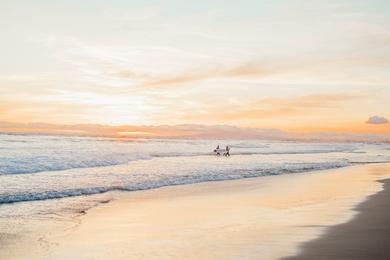
Top LBGTQ Beaches in Alameda, California
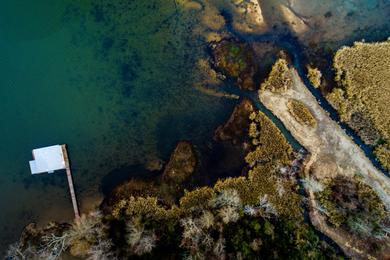
N/A
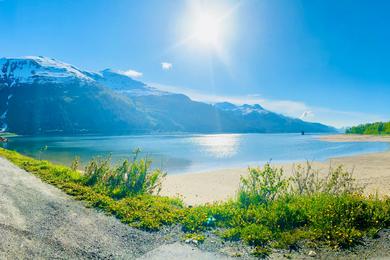
Top LGBTQ Beaches in Alaska
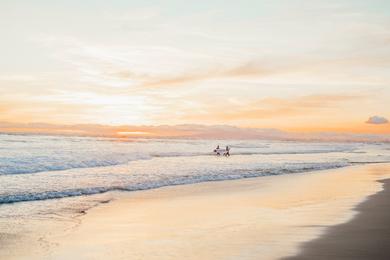
Top LGBTQ Beaches in Albion, California

Top LGBTQ Beaches in Altoona, Florida

Top LGBTQ Beaches in Alys Beach, Florida

Top LGBTQ Beaches in Amelia Island, Florida

Top LGBTQ Beaches in Angels Camp, California

Top LGBTQ Beaches in Anna Maria, Florida

Top LGBTQ beaches in Apollo Beach, Florida

